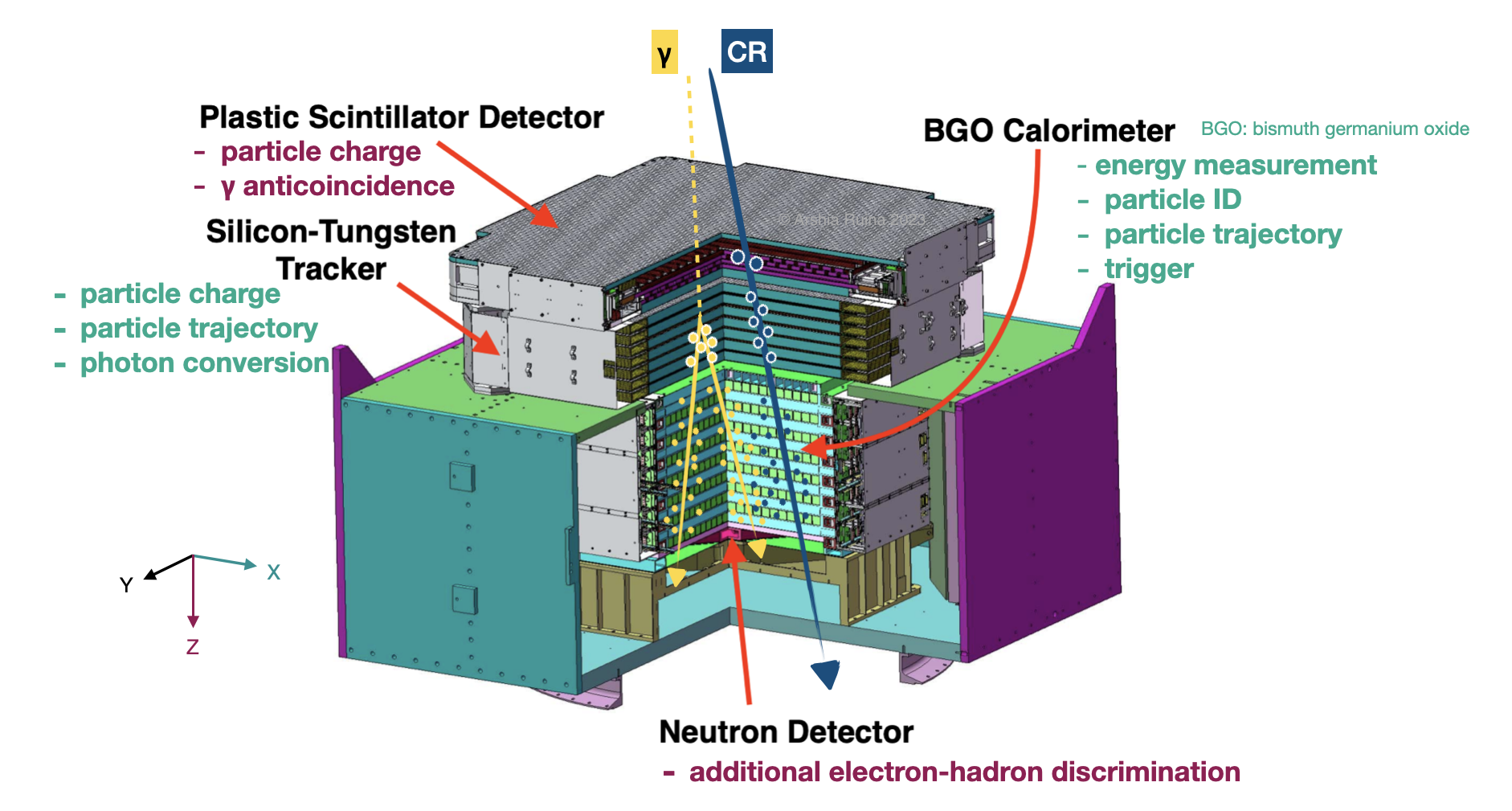DAMPE

The DAMPE (DArk Matter Particle Explorer) is a space-borne particle detector that was launched in December 2015 and has been taking data since. The detector system consists of
- PSD (Plastic Scintillator Detector) for charge measurement,
- STK (Silicon-tungsten TracKer-convertor) for tracking incident particles,
- BGO (bismuth germanium oxide) calorimeter for energy measurement, and
- NUD (neutron detector) that further aids in lepton-hadron separation.

I analysed more than six years of cosmic-ray data (i.e. nearly 13 billion cosmic-ray events detected by DAMPE, equivalent to approximately 200 terabytes of data) to measure the helium flux in the energy range 70 GeV to 1 PeV. My work (link to thesis) involved deploying the newly-developed deep-learning techniques in the collaboration, a first. These improved particle tracking and identification Tykhonov et al. (2023) and compensated for the energy lost in the calorimeter at high energies due to saturation of the electronics Stolpovskiy et al. (2022), extending the capabilities of the detector beyond its design values.
These new results confirmed previously observed features in the energy spectrum as reported by DAMPE in 2021 Alemanno et al.(2021) with more data and higher precision. Indeed, the cosmic-ray spectrum is not a smoothly falling power-law distribution and in my thesis, I discuss in more detail with the help of statistical analyses.
In addition, I played key roles in
- maintaining the data-cleaning procedures that were used in all our analyses made by the European side of the collaboration,
- the development and deployment of a signal correction procedure for the STK which led to a 39% improvement in the measurement precision and 30% reduction in contamination from background interactions
Further reading:
- My presentation at the 38th International Cosmic Ray Conference in Nagoya, Japan (2023) proceedings
